The Presidential Inaugural Committee billed the National Prayer Service as a celebration of "the values and diversity that make us strong." But if it was meant to celebrate diversity then it was difficult to see how.
The service was held on Tuesday, Jan. 22, the day after President Obama's second inauguration, at the National Cathedral in Washington, D.C. President Barack Obama, Vice President Joseph Biden, and their families attended alongside invited dignitaries.
The prayer service was also attended by representatives from major Protestant denominations, the Roman Catholic and Greek Orthodox Churches, Conservative and Reform Jewish groups, and one representative each from the Muslim and Sikh communities.
Meanwhile Mormons, Buddhists, Hindus, Secular Humanists, and followers of Native American religions were absent altogether. And this is hardly new: President Obama's first National Prayer Service, in 2009, also excluded Mormons, Buddhists, Secular Humanists and followers of Native American religions. (There was one Hindu representative but no Sikh.)
When asked why no one from these groups was invited to participate in the National Prayer Service, a spokesman for the National Cathedral said that the Presidential Inaugural Committee and the White House choose the participants. Neither returned multiple phone calls and emails asking for their comments.
Whatever the reasons, choice to exclude these groups from the service is a baffling one given the increasingly diverse religious makeup of the country -- and especially the electorate. Protestant, Catholic, and Orthodox Christians still make up about 76 percent of the country, but their numbers are either holding steady or declining as other groups gain ground quickly.
Mitt Romney didn't become America's first Mormon president, but Mormonism is still one of the fastest-growing religions in the country. In fact, there are about as many Mormons in the United States right now as there are practicing Jews. A spokesman for the Church of Jesus Christ of Latter-Day Saints declined to comment for this article.
Buddhism has also risen meteorically through both immigration and conversion. Buddhists make up only about 0.6 percent of the U.S. population -- roughly the same as Orthodox Christians, and just slightly more than Muslims. But their numbers also rose 170 percent between 1990 and 2000. And some scholars believe that trend is still continuing.
"On the one hand, there have been some really great developments by the Obama Administration: The White House hosted the first-ever Dharmic Religious and Faith Institutional Leaders Conference last April, and in the middle of last summer Ven. Miao Hong became the first Buddhist appointee to the Advisory Council on Faith-Based and Neighborhood Partnerships." explained Rev. Danny Fisher, a professor and Coordinator of the Buddhist Chaplaincy Department at University of the West in Rosemead, California. "On the other hand, there are also these big misses: From the beginning of his first term, President Obama said, 'Christians, Jews, Muslims, Hindus, and nonbelievers,' excluding Buddhists and not inviting [Buddhist] representatives to things like the National Prayer Service."
Anju Bhargava, founder of Hindu American Seva Communities, echoed this sentiment.
"America's religious diversity and pluralism is reflected in every corner of our country. The White House has made efforts to work with the Dharmic community," she said, "And we, the eastern traditions, have had some representation. One day we hope there will be fuller representation of the eastern traditions in all aspects including the national prayer."
The number of secular humanists, atheists, agnostics, and others who don't identify as members of a particular religion is growing faster than even the fastest-growing religious group -- something the Pew Forum on Religion in Public Life has labeled the "rise of the nones." Around 16 percent of Americans do not identify with any religious group, making them America's second-largest "religion" next to Christianity.
Chris Stedman, an interfaith activist and the assistant Humanist chaplain at Harvard University, shared many of Fisher and Bhargava's concerns. However, he was also concerned with the overall tone of the Inauguration.
"As the number of religiously unaffiliated Americans continues to grow, it's important to lift up the nonreligious as a part of the religious diversity that defines America," Stedman explained. "The inaugural festivities were littered with references to god . . . . But what's worse is that nonbelievers weren't acknowledged at all. This was disappointing, as Obama was the first president to reference nonbelievers in an inaugural address, in 2008. In the future I hope to see nonreligious voices included in interfaith contexts like this with greater regularity."
Overall, leaders of minority religious groups are pleased with the strides they have made under the Obama Administration. Still, many see room for growth and improvement.
"It's hard not to appreciate all that has been done in the last four years," said Fisher, "but the work isn't complete yet. If we're serious about honoring religious pluralism as a country, then there definitely needs to be a much more diverse presence at events like the National Prayer Service."